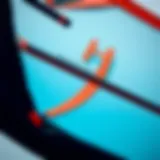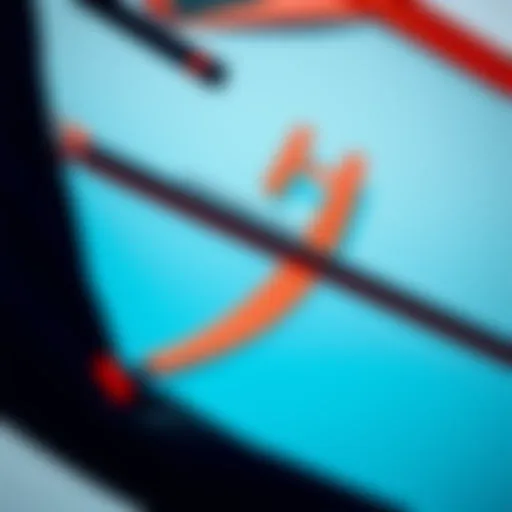Navigating the Wing Foil Kit Market: An In-Depth Guide

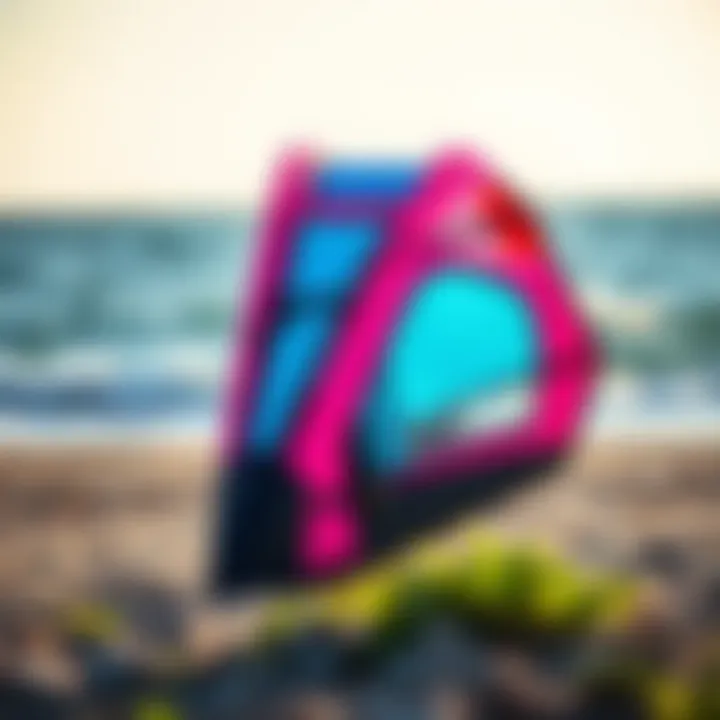
Intro
In recent years, the world of kiteboarding has taken a thrilling turn with the introduction of wing foiling. This innovative sport combines elements of traditional kiteboarding with the freedom of hydrofoiling. As such, understanding wing foil kits has become crucial for enthusiasts eager to embrace this newest trend. From selecting the right equipment to maintaining it, navigating the wing foil kit market can feel like diving into deep waters without a life jacket.
In this guide, we’ll dive deep into the intricacies of wing foil kits, including their types, essential features, and considerations to keep in mind before making a purchase. With so many options available, it’s vital to filter through the noise and focus on what suits your riding style and experience level best. Whether you’re a beginner stepping onto the water for the first time or a seasoned pro looking to refine your kit, this comprehensive exploration will equip you with the knowledge you need.
Gathered from expert insights and personal experiences, we aim to provide you with a well-rounded understanding of the wing foil market, helping you make saved decisions tailored to your needs. Let’s set forth on this adventure, ensuring your riding experience is both rewarding and enjoyable.
Preamble to Wing Foil Kits
The world of water sports has evolved quite a bit over the years. Among the latest trends is wing foiling—a thrilling blend of kitesurfing and windsurfing that has captivated many enthusiasts. As more people take to the water with wings in hand, understanding wing foil kits becomes essential. These kits are not just a collection of equipment; they form the backbone of a rising sport that offers both excitement and the allure of gliding above the waves.
A wing foil kit essentially combines a wing (the sail) with a foil (a submerged lift-generating apparatus), providing a unique riding experience. The significance of grasping what makes up these kits cannot be overstated, especially for those diving headfirst into wing foiling. Choosing the right kit leads to a smoother ride and can drastically enhance one’s overall enjoyment of the sport.
The benefits related to wing foil kits are multifaceted. First off, versatility stands out—these kits can be customized to suit various skill levels and riding styles. Also, the way in which wingers feel the wind and water connection can change how they approach maneuvering. These kits give kiteboarders, adventurers, and novices alike the chance to harness nature's elements in a completely new fashion.
One must also consider key elements such as size, weight, and construction material. Inadequate knowledge of these factors could lead to poor choices when selecting equipment, which might diminish the thrill this sport promises. This introduction serves as a crucial stepping stone into the deeper realms of wing foil kits and their variety. The journey ahead will explore different types, features, and practical aspects of maintaining these kits, equipping enthusiasts with the insights they need for an informed investment in their wing foiling adventure.
Definition and Overview
At its core, a wing foil kit comprises a wing designed to catch the wind and a foil that lifts the board above the water. It’s essential to break down these components for a clearer picture.
- Wing: This is the inflatable sail that is controlled by the rider. Riders can choose between various designs based on skill level and wind conditions.
- Foil: The foil consists of a mast, fuselage, and wings. Its construction plays a significant role in performance, affecting everything from stability to speed.
The beauty of wing foiling lies in its simplicity yet intricate dynamics. Riders can glide with ease once they master the control of both the wing and the foil. Every turn, jump, or glide becomes an art form, showcasing the rider’s skill and connection with nature.
Historical Context of Wing Foiling
The roots of wing foiling aren't deeply buried in history, but they trace back to the development of windsurfing and kitesurfing. Early innovators used various rigid sails positioned on boards—ideas that laid the groundwork for today’s wing designs. In 2017, the first commercially available wing foil kits emerged, paving the way for enthusiasts curious about the new dimension these kits offered.
This new approach to riding giant waves and flat waters generated a fresh movement within the watersports community. Over recent years, wing foiling has gained traction in locations like Hawaii and Europe, as riders sought a new way to experience their favorite spots without the constraints set by traditional boards.
Today, it stands as not just a sport, but a community of like-minded individuals looking to share tips, tricks, and experiences. Social media platforms give rise to trends, showcasing tricks and techniques that entice newcomers as they dream of gliding across shimmering surfaces. As wing foiling continues to grow, its significance as both a leisure pursuit and a competitive sport becomes more apparent, solidifying its place in the water sports arena.
Types of Wing Foil Kits
Understanding the different types of wing foil kits is paramount for anyone looking to immerse themselves in the exhilarating sport of wing foiling. Each kit type brings its own unique characteristics and advantages, allowing riders to tailor their gear to their specific preferences and skill levels. Selecting the right type can significantly influence your experience on the water, from ease of use to performance optimization. Here’s a deeper look into the two main categories that dominate the market today: complete kits and DIY component kits.
Complete Kits
A complete wing foil kit typically includes all the necessary components required for a fully functional setup, making it a popular choice for beginners and those looking for a hassle-free experience. A standard complete kit usually consists of:
- Wing: The inflatable wing that provides lift.
- Foil: The structure that connects the board to the wing, allowing for gliding above the water's surface.
- Board: A specialized board designed for stability and maneuverability.
- Safety Gear: Often includes a leash and possibly a helmet or impact vest.
Benefits of Complete Kits
Complete kits are advantageous for several reasons:
- Convenience: When you purchase a complete kit, you receive all essential components in one package. This ensures compatibility and saves time searching for individual pieces.
- Guided Selection: Many companies offer kits designed for specific skill levels, so beginners can easily find a kit tailored to their needs. For this reason, it reduces the risk of buying unsuitable gear.
- Cost-Effectiveness: Buying in bulk often saves money compared to purchasing individual components separately.
DIY Component Kits
On the other end of the spectrum are DIY component kits. These kits are intended for more experienced kiteboarders or those who may have particular preferences about specific component brands. A DIY kit usually includes:
- Individual Wing Options: Select wings based on size, shape, and riding style.
- Foil Elements: Choose from different foil constructions, wings, and masts to create a personalized setup.
- Board Selection: Riders can pair different board shapes and volumes with their chosen foil characteristics.
- Accessories: Many riders opt to purchase custom harnesses or safety gear that aligns with their specific needs.
Considerations for DIY Kits
While assembling a kit may seem daunting, it has distinct benefits that call out to seasoned riders:
- Customization: With the ability to select each component, riders can tailor their setup for enhanced performance tailored to their riding style.
- Expert Insights: In many cases, experienced riders have a wealth of knowledge regarding the best gear combinations. Online forums and communities, such as those on Reddit, can provide invaluable advice at https://www.reddit.com/r/wingsurfing.
- Upgradability: As skills improve, riders can replace parts or upgrade components without having to invest in an entirely new kit.
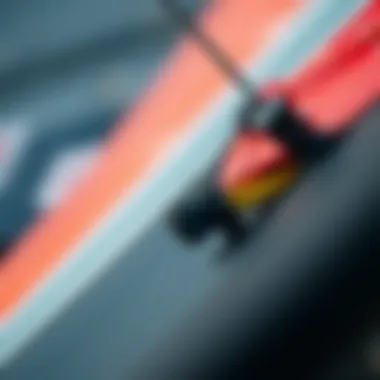
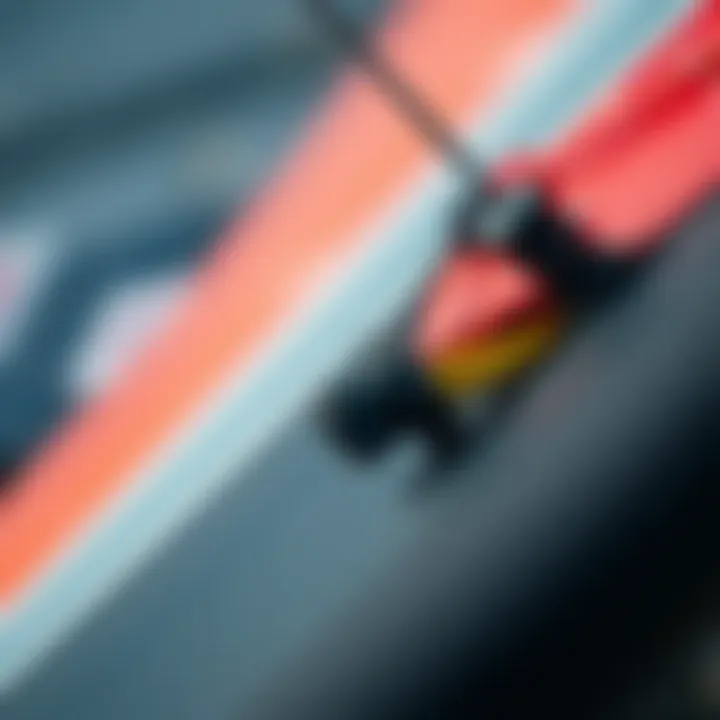
"The most rewarding aspect of wing foiling is creating a setup that feels just right for your unique style and preferences."
Key Features to Consider
When diving into the wing foil kit market, understanding key features is essential for making an informed decision. Each element of the kit plays a pivotal role in enhancing your overall riding experience. Failing to consider these features could lead to choices that may hamper your performance on the water or, worse yet, impact your safety.
Wing Size and Shape
The wing size and shape are undoubtedly at the forefront of what you should analyze. Generally, bigger wings offer better lift and can make it easier for beginners to get airborne. Conversely, smaller wings provide a sense of agility and responsiveness that seasoned riders seek to execute tricks and manoeuvres. The differentiation doesn't stop at size alone; the shape of the wing—whether it's a high-aspect ratio or a more rounded style—also influences performance. High-aspect wings slice through the air more efficiently, while more rounded wings may offer easier handling in dynamic water conditions. Think of it this way: it’s like trying to run with a parachute versus a small kite—your performance hinges on the design.
- Considerations:
- Your skill level and experience.
- The typical conditions you ride in.
- Whether you prioritize stability or maneuverability.
Foil Construction Materials
Another vital aspect is the materials used in constructing the foil. The effectiveness of the foil—its rigidity, weight, and durability—can make or break a good session. Common materials include aluminium, carbon fiber, and foam. Carbon fiber tends to be the lightest and strongest, but also comes with a heftier price tag. Aluminium options are often more budget-friendly but may not offer the same level of performance. It’s essential to weigh your options against your riding style. Foils that flex too much can reduce efficiency, while those that are overly stiff can lead to a harsh ride. You have to find that sweet spot.
- What to look for:
- The balance between weight and strength.
- The flex characteristics that suit your riding style.
Harness and Accessories
Don’t overlook the importance of the harness and necessary accessories. After all, comfort and safety should never take a backseat. The type of harness—whether it’s a waist or seat harness—greatly affects how easily you can control your movements as you glide above the water. Properly fitted harnesses distribute pressure evenly, preventing fatigue on long rides. Accessories such as leashes and safety knives may seem trivial but can be critical in emergency situations. Imagine being caught in a tangle; having the right tools on hand can save you a world of trouble.
Key Takeaway: Choose a harness that suits both your style and comfort, and always make safety part of your equation.
- Must-haves:
- Durable, comfortable harness options.
- Safety accessories that provide peace of mind on the water.
Where to Buy Wing Foil Kits
Finding the right wing foil kit doesn’t merely hinge on selecting the best equipment; it heavily relies on the choice of where to buy. The landscape of wing foil kit purchasing is diverse, as potential buyers have access to various options that each present unique benefits and considerations. This section aims to equip enthusiasts with knowledge on different purchasing avenues, aiding them in making wise decisions and ensuring they find a kit that perfectly fits their style and needs.
Online Retailers
The internet has transformed the way we shop, and wing foil kits are no exception. Online retailers provide a colossal range of options, often surpassing what you can find in physical stores. Here are some of the key advantages and factors to keep in mind:
- Wider Selection: Online retailers like Amazon, Windward, and even specialized sports shops often have a more extensive inventory compared to local stores. This means you can find everything from entry-level options to high-end professional kits, all in one place.
- Convenience: Shopping for a wing foil kit online means you can do it from the comfort of your couch. No need to battle traffic or crowds; just sit back, browse, and pick what catches your eye.
- Price Comparisons: With a few clicks, you can compare prices across several websites. This can be crucial in finding the best deals or even catching seasonal sales.
However, it’s wise to keep some considerations in mind:
- Shipping Costs: Be aware that shipping costs can pile up, especially for larger items like wing foil kits. Sometimes, a good deal online can vanish once you account for those extra charges.
- Quality Assurance: When purchasing online, quality may be uncertain. Reading customer reviews is essential to gauge product performance and reliability. Check reputable reviews on sites like reddit.com to get insights from fellow kiteboarders.
- Return Policies: Always check the return policies before making a purchase. A flexible policy allows you to return or exchange products if they do not meet your expectations.
Local Shops and Showrooms
While the online market is expansive, local shops and showrooms haven’t been left behind. They offer a different kind of shopping experience that can benefit customers in several ways:
- In-Person Experience: One of the most significant advantages of visiting a local shop is the ability to see and touch the products. This tactile interaction can be invaluable when evaluating materials and weight. Feeling the wing’s size and shape firsthand can aid in decision-making.
- Expert Advice: Shop owners and staff often have first-hand experience with the equipment they sell. This direct interaction allows for immediate feedback and recommendations specific to your skill level and riding style.
- Community Building: Visiting local shops fosters a sense of community among wing foilers. It’s a great way to meet fellow enthusiasts who may share tips, tricks, and suggestions on the best places to ride.
Nonetheless, there are drawbacks to be aware of:
- Limited Stock: Local shops may not have the extensive inventory that online retailers boast. You might have to compromise on options; if you're set on a certain brand, they may not carry it in stock.
- Pricing Variances: Often, prices at local stores may be higher due to overhead costs. It’s essential to consider whether the personal touch and proximity outweigh the potential savings available online.
In your search for wing foil kits, the choice between online and local sources frequently depends on personal preference. By weighing the benefits and fidelity of each, you can tailor your purchasing decisions to better satisfy your riding needs. Whether it’s the instant gratification of walking out with a new kit or the ease of online shopping at your fingertips, each option has its merits. Ultimately, the right choice leads to a more fulfilling riding experience.
Price Range and Budgeting
When considering any sporting equipment, particularly wing foil kits, understanding the price range is crucial. This helps potential buyers streamline their search and ensures that enthusiasts of all levels can find something that fits their budget while not compromising on quality. The price of wing foil kits varies significantly depending on several factors, including the brand, materials used, and the kit's overall complexity. This section dives into the different price points available in the market, assisting you in making an informed decision that aligns with both your riding needs and financial plans.
Entry-Level Kits
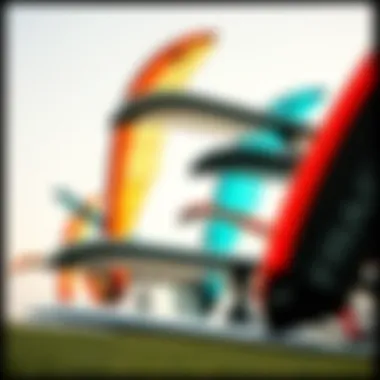

Entry-level kits serve as a fantastic starting point for newcomers to the world of wing foiling. Typically priced between $400 to $1,000, these kits are designed to provide a solid foundational experience without breaking the bank. The key benefits of entry-level kits include:
- Accessibility: They are often lightweight and easy to handle, making learning more manageable for beginners.
- Essential Components: These kits usually come with a basic wing, foil, and board, providing everything a newcomer needs to hit the water.
- Affordability: With the lower price tag, it's also easier for novices to test the waters before fully committing to the sport or upgrading to more advanced equipment.
However, while these kits are budget-conscious, buyers should also carefully assess the quality and durability to ensure they get decent performance without frequent repairs or replacements.
Premium Options
For those with more experience or a commitment to the sport, premium kits present a wealth of high-end features and advanced technologies. The price point for these kits often ranges from $1,200 to upwards of $3,000. The added investment can provide:
- Superior Performance: Premium kits typically offer refined designs and materials that enhance speed, maneuverability, and stability on the water.
- Customization: Higher-end brands often allow for greater customization in terms of wing shape and size, catering to specific riding styles or conditions.
- Durability: Made from advanced materials, premium options tend to withstand wear and tear more effectively than their entry-level counterparts, which can save money in the long run.
While the initial investment is steeper, riders in this category often find the rewards in performance and overall experience justify the cost.
Value for Money Considerations
In the face of varying price points, determining where value truly lies can be challenging. The conversation around value for money isn't just about finding the lowest price; it's about investing wisely in equipment that meets your needs. Here are some vital aspects to consider:
- Brand Reputation: Consider well-established brands known for quality manufacturing, such as Naish, Duotone, and Slingshot. A name you can trust often means better resale value and reliability.
- Warranty and Support: A robust warranty can be indicative of the brand's confidence in its product. Make sure to inquire about support services as well—good customer support can save headaches down the road.
- Resale Value: As you get better or decide to upgrade, keep in mind that certain brands and models maintain better resale value than others. Researching the market trends can provide insight into which kits could be easier to sell later.
"Investing in a wing foil kit isn't just about the initial cost; it's about the overall experience and what you’ll be left with in the long run."
In summary, budgeting effectively for a wing foil kit requires a balance between initial costs and long-term value. Whether you’re dipping your toe into the sport with an entry-level option or ready to splurge on a premium setup, thoughtfully considering features, brand reputation, and potential resale can guide you toward a wise investment.
Reviews and Recommendations
In the ever-evolving landscape of wing foiling, where innovation meets adventure, the importance of reviews and recommendations cannot be overstated. For a kiteboarding enthusiast, understanding the experiences of others can mean the difference between a rewarding ride and a frustrating outing. Reviews serve as a compass, guiding users through a myriad of choices while recommendations provide the insights needed to refine these selections.
Expert Reviews
Expert reviews from seasoned riders or industry professionals provide a wealth of knowledge that is hard to come by elsewhere. These reviews often delve into the intricate details of various wing foil kits, analyzing key elements such as performance, durability, and ease of use. Understanding their perspective often highlights nuances that an average user might overlook. For example, an expert might point out that a particular wing shape offers better stability in choppy waters, a detail that could be a game-changer for many riders.
Additionally, these reviews cover specifications that can appear daunting to newcomers. Here’s what can usually be extracted from expert comments:
- Performance Metrics: How kits perform across various conditions.
- Build Quality: Insights on materials and construction.
- Technical Features: Information on design elements that influence ride characteristics.
- Real-world Applications: Use cases that demonstrate effectiveness in specific environments.
Incorporating expert reviews into decision-making allows riders to align equipment selections with their personal riding style and conditions they frequently encounter.
User Experiences and Community Feedback
User experiences paint a vivid picture of what someone can expect when using a specific wing foil kit. This collective feedback often embodies a range of perspectives — from ecstatic first-time users to frustrated seasoned riders. These reviews are typically found on platforms like forums, blogs, or social media, presenting a grassroots viewpoint that complements the polished insights of experts.
- Pros and Cons: Users share the highs and lows of their gear, providing a balanced view that is invaluable.
- Real-Life Usage Scenarios: Whether it’s hitting the waves at sunset or cruising during a midday breeze, these stories illustrate how products perform under various conditions.
- Tips and Tricks: Experienced users often share personal tips that can lighten the learning curve. For instance, advice on proper wing handling techniques can enhance safety and performance.
Furthermore, online communities such as Reddit and niche Facebook groups often host discussions that reveal ongoing trends and common concerns, ensuring that every potential buyer is well-informed about the current market sentiment.
Quote: “The best way to gauge the value of new gear is through those who’ve already put it to the test. Dive into the reviews; they tell the tale of real-world riding.”
By taking both expert reviews and community feedback into account, aspiring wing foilers can make well-rounded choices that resonate with their personal expectations and riding goals. These insights ultimately steer them toward equipment that not only meets but exceeds their needs, enabling successful and exhilarating experiences on the water.
Maintenance and Care for Wing Foil Kits
Proper maintenance and care for wing foil kits is essential in prolonging the lifespan of your equipment and enhancing the overall riding experience. Just like an intricate piece of machinery, a wing foil kit requires attention and care to ensure it operates smoothly and safely. Neglecting maintenance can lead to a decrease in performance or, worse, accidents. This section delves into the key aspects of maintaining your kit, focusing on cleaning, storage, and other considerations that every kiteboarder should be aware of.
Cleaning Guidelines
Keeping your wing foil kit clean is of utmost importance. Sand, salt, and grime can accumulate quickly, especially if you're maneuvering through rough waters. Ignoring this buildup can result in wear and tear that might not be immediately visible but can affect performance in the long run. Here’s how to approach cleaning:
- Fresh Water Rinse: After each use, rinse your wings and foil components with fresh water. This helps remove salt, sand, and other debris that could corrode or damage the materials.
- Soft Cloth: Use a soft cloth or sponge to gently wipe down fabric surfaces, removing dirt or stains without causing scratches.
- Avoid Harsh Chemicals: Do not use bleach or harsh detergents, as they can degrade materials. A mild soap will suffice.
- Drying: Allow your equipment to dry completely in the sun but avoid prolonged exposure, as UV rays can degrade materials over time.
- Inspect for Damage: During cleaning, check for any signs of wear, such as frayed edges or deep scratches, and address any issues right away to prevent further damage.
Storage Best Practices
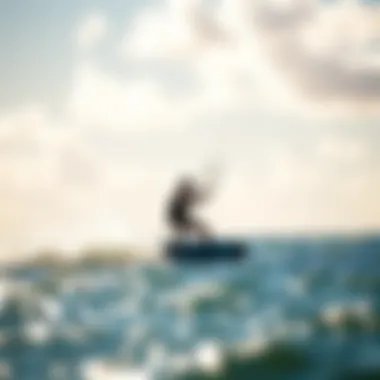
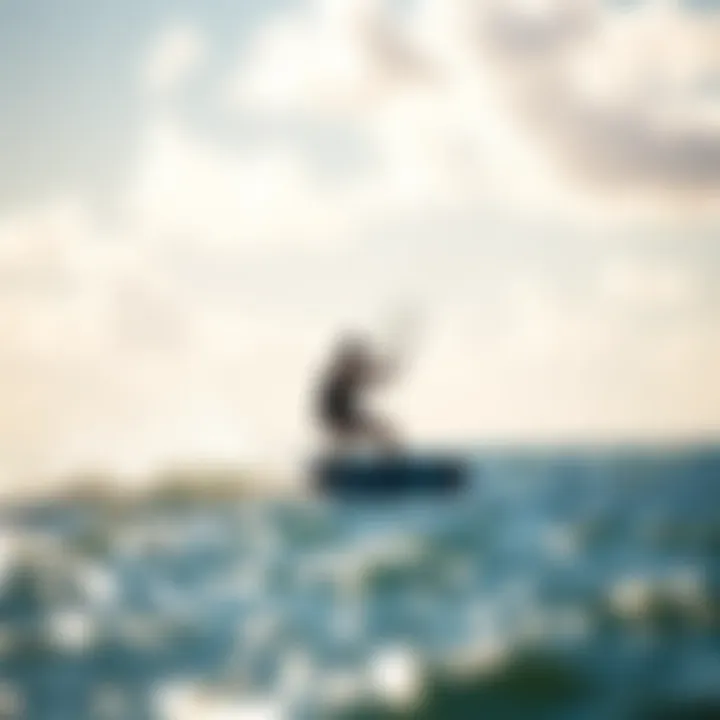
Storage plays a significant role in maintaining your wing foil kit in prime condition. Proper storage techniques can shield your equipment from environmental damage and physical impact. Consider the following guidelines for effective storage:
- Dry Location: Always store your kit in a dry place away from direct sunlight. Humidity and excessive heat can damage the wings and foil materials.
- Use a Bag: Invest in a storage bag specifically designed for wing foil kits. This offers protection from dust and impact, reducing the chance of any unintentional dents or punctures.
- Avoid Overcrowding: Don't stack heavy objects on top of your kit when storing it. This can cause deformities in the wings or strain the foil.
- Check Regularly: Inspect your kit periodically even when it's in storage. Look for signs of wear and ensure no mildew has formed, especially in humid conditions.
As you dive into the world of wing foiling, keeping your equipment in top shape not only ensures safety but also significantly enhances your experience on the water. Dedicating time to maintain and care for your wing foil kit can make a noticeable difference over time.
"A well-cared-for kit is your best ticket to freedom on the water. Don't let neglect clip your wings!"
By incorporating these maintenance strategies into your routine, you can enjoy countless sessions on the water without hassle, knowing your gear is ready to perform at its best.
Safety Considerations
When it comes to wing foiling, safety should never take a back seat. This sport, while exhilarating, comes with inherent risks that potential riders must acknowledge and prepare for. Proper safety measures not only safeguard the rider but also enhance the overall enjoyment of the experience. A sturdy understanding of safety gear and self-awareness while riding can prevent mishaps and contribute to a more fulfilling time on the water.
Safety Gear and Equipment
Equipping yourself with the right safety gear can make all the difference. Here are some essential items to consider:
- Helmet: A high-quality helmet protects your head from falls or collisions. Ensure it fits snugly and is designed specifically for water sports, with drainage holes to avoid water accumulation.
- Impact Vest: An impact vest offers additional cushioning during falls, which can happen unexpectedly. Some vests also provide buoyancy, aiding flotation.
- Leash: A leash connects the wing to your body and ensures you don’t lose your equipment in the water. This is particularly important in troublesome currents.
- Foil Board: While it may seem obvious, choosing a board with adequate grip and safety features is essential. A board that’s too slippery can lead to falls or injuries.
- Personal Flotation Device (PFD): For overall safety, especially in deeper waters far from shore, a PFD can be crucial. It’s advised to wear one, particularly for less experienced riders.
Adding these items to your kit ensures that you stay out of harm's way, allowing you to focus on mastering your skills.
Riding Within Your Limits
One of the most critical, yet often overlooked, facets of safety is knowing your limits. This involves understanding your skill level, weather conditions, and the type of water you’re navigating. Some key points include:
- Skill Assessment: It’s important to be objective about your skills. Attempting maneuvers that exceed your competence can lead to accidents. Start with basic techniques and gradually progress as you gain confidence and experience.
- Weather Check: Always check the local weather conditions before heading out. Strong winds or storms can significantly impact your ride. If conditions don’t seem right, it's best to sit it out; the ocean can be unforgiving when the weather turns.
- Know Your Terrain: Familiarize yourself with the waters you're riding on. Different spots have different hazards such as rocks, currents, or shallows. Riding in an unknown area without prior research can be risky.
- Set Boundaries: Sometimes, it’s easier to overexert oneself without realizing it. Establish personal boundaries based on what you’re comfortable handling. Knowing when to call it a day can save lives.
"Safety isn't just about gear; it's understanding your own limits and the environment around you."
Future Trends in Wing Foiling
As the world of water sports evolves, wing foiling continues to carve its niche. The future trends in wing foiling are pivotal, not only for enthusiasts seeking enhanced adventure but also for manufacturers aiming to meet changing consumer demands. Understanding these trends offers insights into what's next in this exhilarating sport. It highlights critical elements like technological advancements and sustainable practices that are reshaping the market.
Technological Innovations
The rapid pace of technological innovations in wing foiling is nothing short of fascinating. New materials and designs are pushing the limits of performance and user experience. For example, manufacturers are utilizing lightweight composites which improve buoyancy and maneuverability. This not only enhances the riding experience but also reduces fatigue over longer periods — it's like trading a heavy anchor for a feather.
Some noteworthy advancements include:
- Portable Designs: Manufacturers are increasingly focused on making equipment easy to transport. Foldable wings and compact foils are becoming standards, important for anyone traveling to their next adventure.
- Smart Technology: Imagine wings equipped with sensors that monitor performance and provide real-time analytics. This tech helps riders fine-tune their skills, making learning faster and more effective.
- Enhanced Durability: Innovations have led to more robust materials that withstand harsh conditions. This durability reduces the need for frequent replacements, saving users both time and money.
These innovations are not just upgrades; they redefine the sport itself. The ability to adapt to diverse conditions while maintaining peak performance is increasingly becoming a key selling point for wing foil kits.
Sustainability in Foil Manufacturing
With a greater focus on environmental responsibility, sustainability is also influencing the wing foiling landscape. The adverse impact of production processes on nature has prompted many manufacturers to rethink their approach. Being eco-friendly isn't just a marketing strategy anymore; it is becoming essential in consumer choices. Here’s what’s happening:
- Eco-friendly Materials: More companies are turning to sustainable materials, such as recycled plastics and biodegradable composites. This makes the products align better with eco-conscious consumer values.
- Energy-efficient Manufacturing Processes: Manufacturers are exploring renewable energy sources in production facilities. This commitment reduces carbon footprints and resonates positively with the growing environmental awareness among outdoor enthusiasts.
- Long-lasting Products: The trend towards creating more durable products mitigates waste. Items that last longer contribute to less frequent replacements, making it not just a win for your wallet but for the planet as well.
Culmination
The conclusion of this comprehensive guide on wing foil kits serves as a pivotal moment for readers, tying together all insights gleaned from earlier sections. It emphasizes the significance of understanding not just the types and features of wing foils, but also the importance of informed decision-making for both safety and enjoyment on the water. Ultimately, this section reaffirms the necessity for kiteboarders—whether novice or experienced—to approach their equipment choices with diligence and awareness.
Recap of Key Insights
To highlight the key points, let’s recap what we’ve covered regarding wing foil kits:
- Understanding Different Types: Recognizing the difference between complete kits and DIY components allows for tailored purchases that align with individual skill levels and objectives.
- Essential Features: Knowing how wing size, shape, and materials impact performance helps riders match gear to their riding style.
- Maintenance Practices: Prioritizing care and proper storage can significantly extend lifespan and effectiveness of the equipment.
- Safety Considerations: Wearing appropriate gear and riding within one’s limits are essential for ensuring a safe experience.
- Future Directions: Awareness of technological advances and eco-friendly trends can inform potential future purchases that cater to a sustainability mindset.
Encouragement for Informed Purchases
As kiteboarders embark on the journey of selecting wing foil kits, the article encourages a thoughtful approach to shopping. Knowledge is power, and making educated choices about gear can dramatically enhance one’s experience on the water. Researching potential purchases, comparing various products, and seeking feedback from fellow enthusiasts can pave the way for smart investments.
Final advice? Don’t rush into a purchase. Take the time to delve into market trends, and pay attention to product reviews—both expert and community-driven. By going the extra mile in understanding the finer details of wing foils, riders position themselves to not just enjoy the activity but to truly excel within it.
"Knowledge brings confidence, and confidence translates into skill and enjoyment on the water."
For more resources, consider visiting Wikipedia on Wing Foiling or engaging with communities on platforms like Reddit. Gathering insights from shared experiences will bolster your understanding and refine your choices in purchasing wing foil kits.










